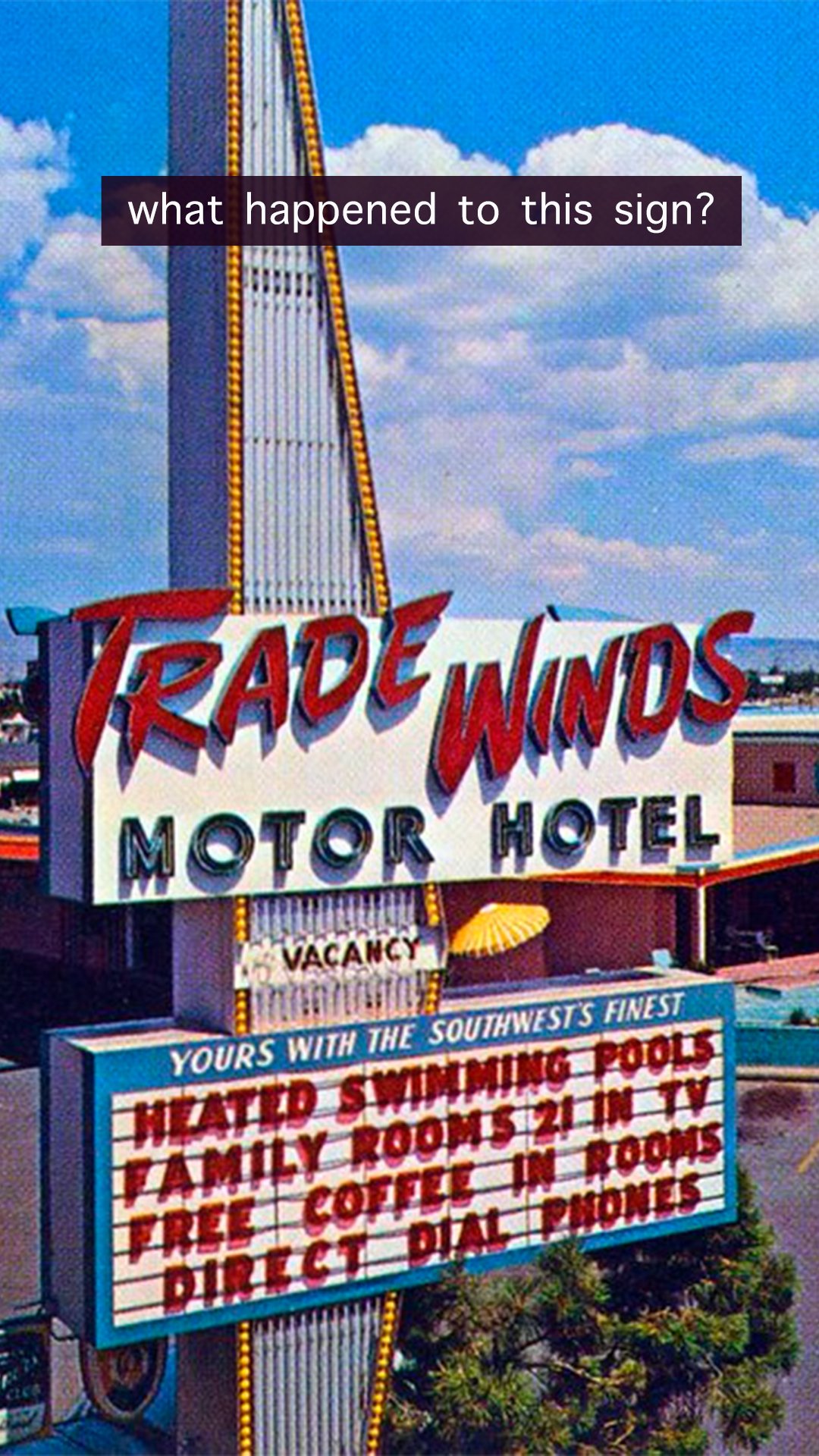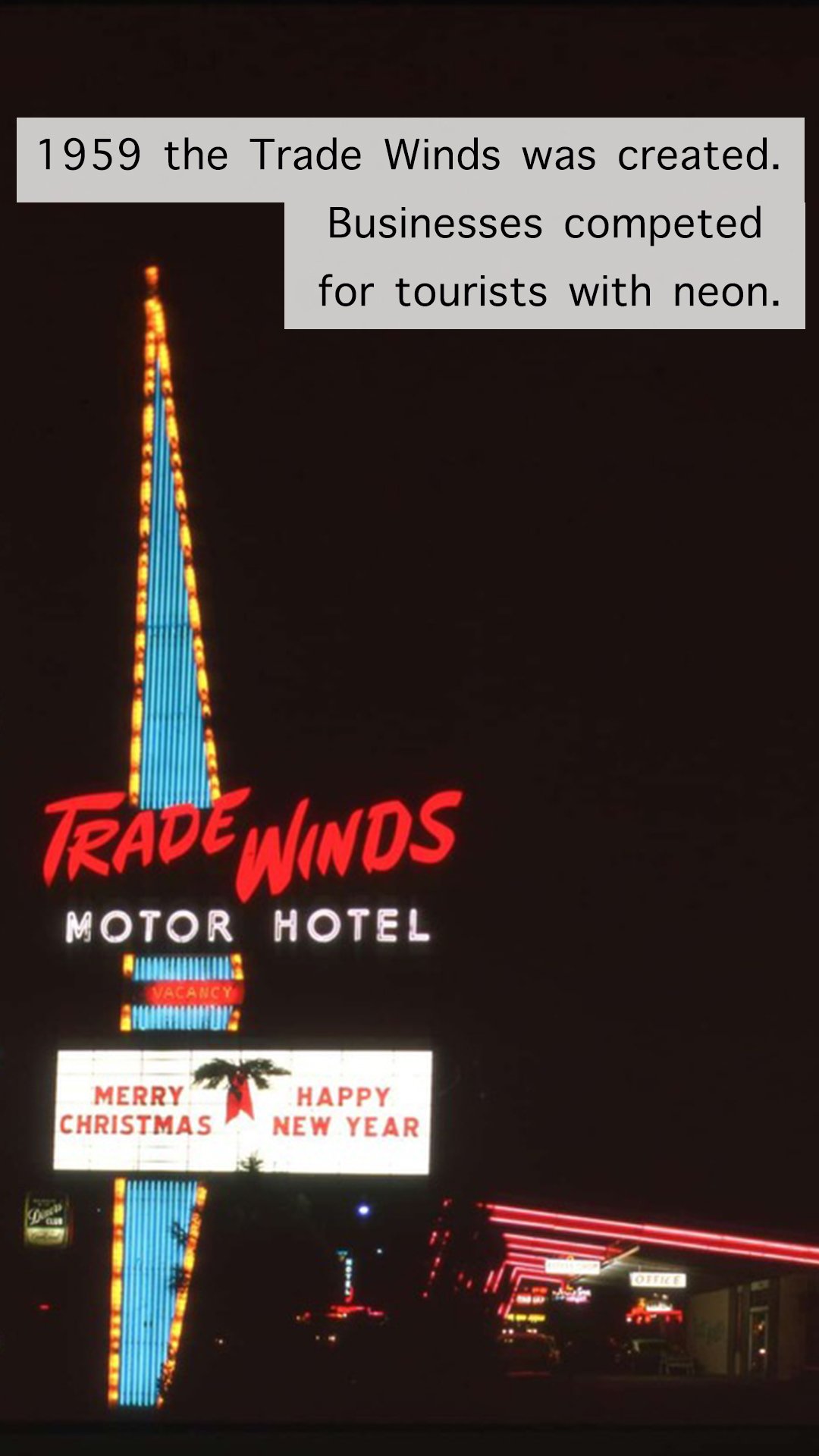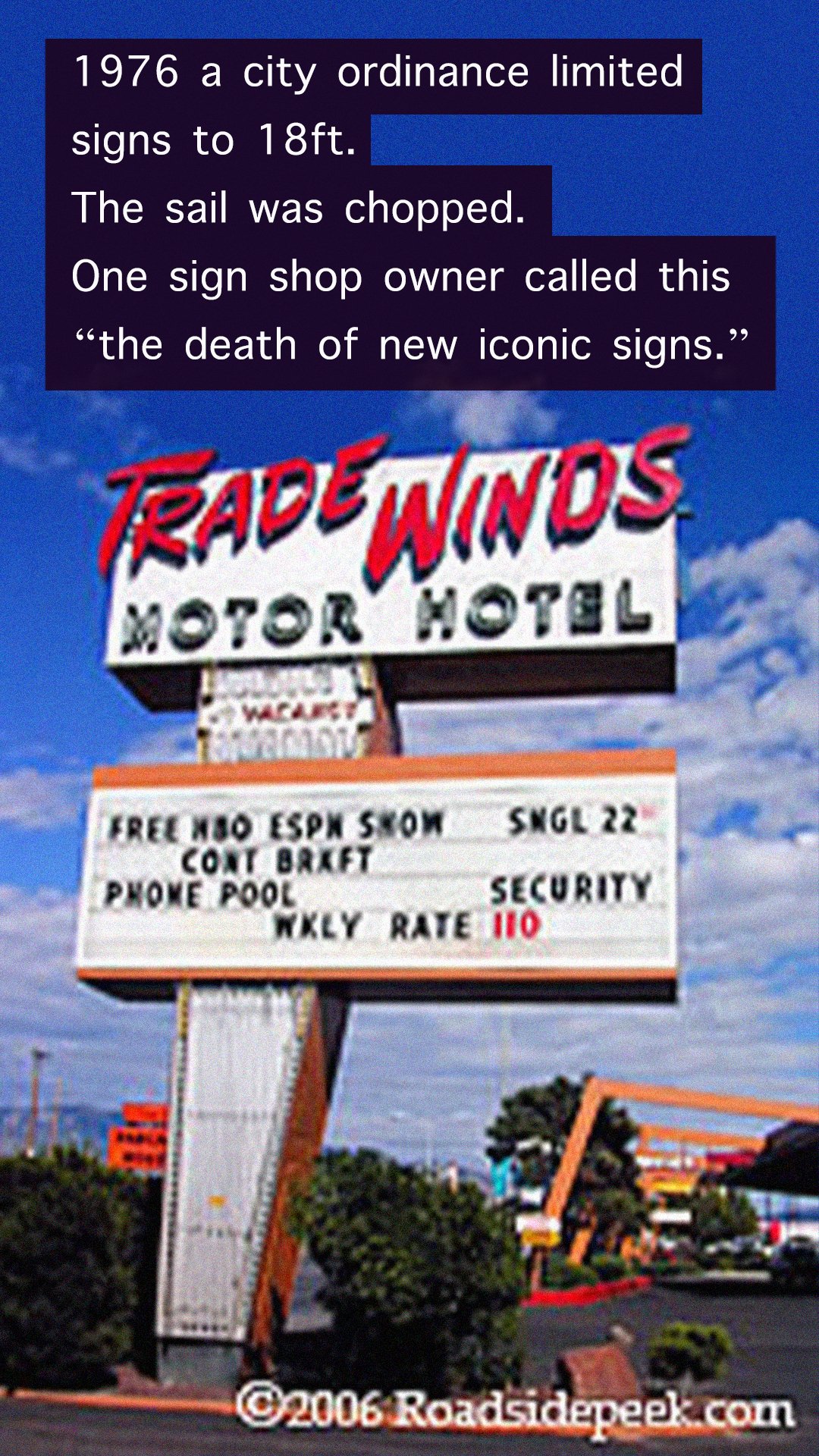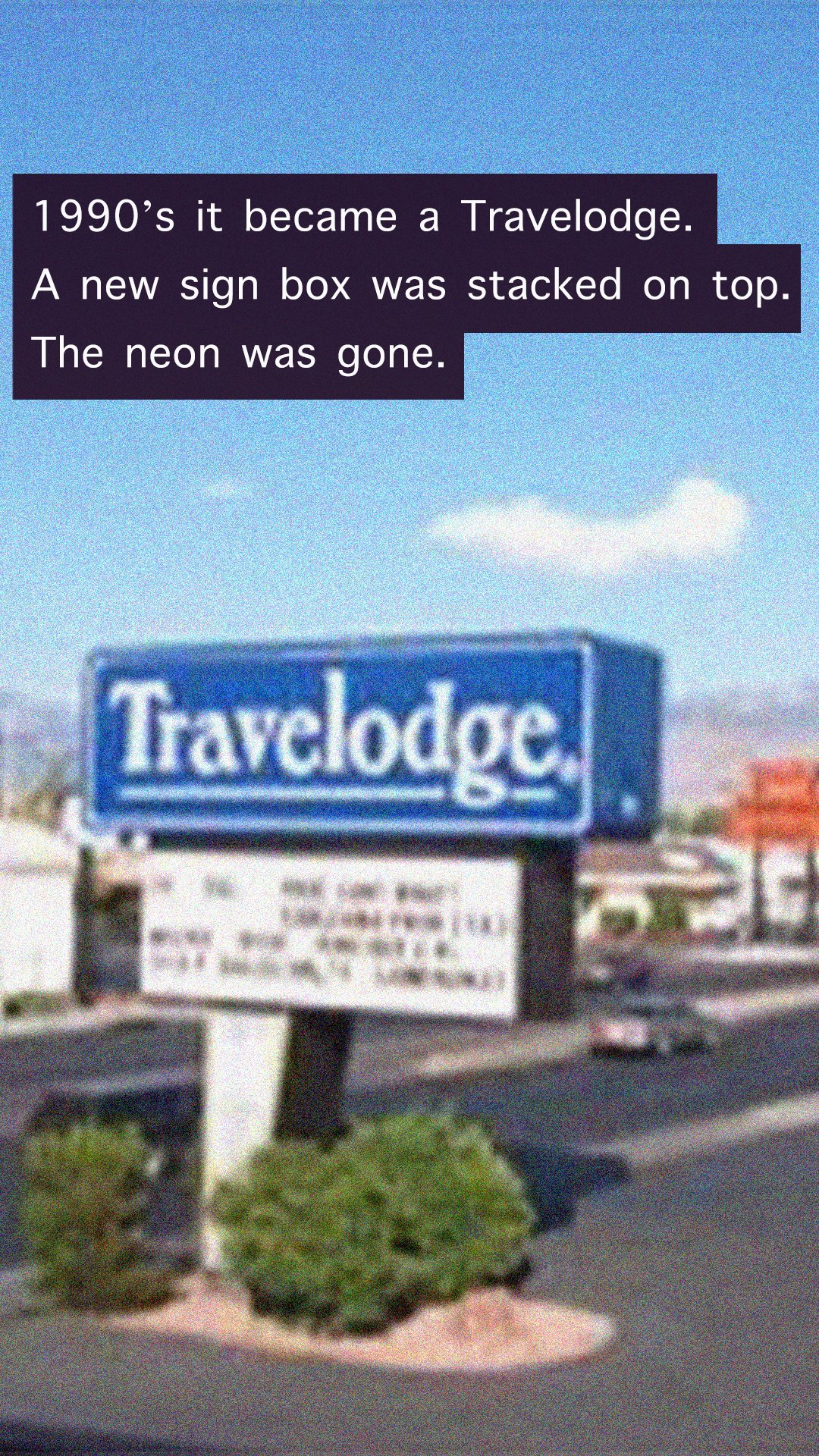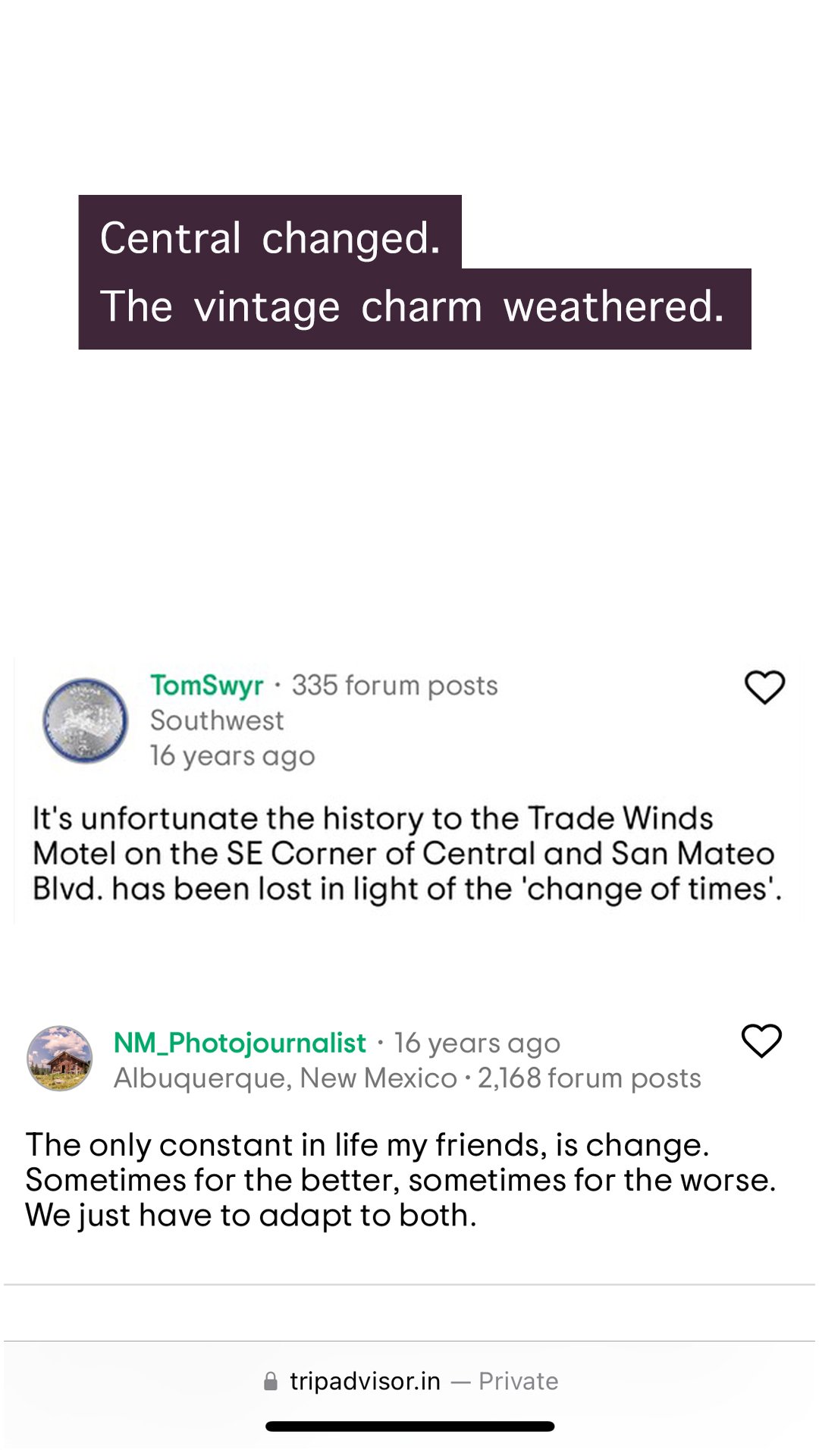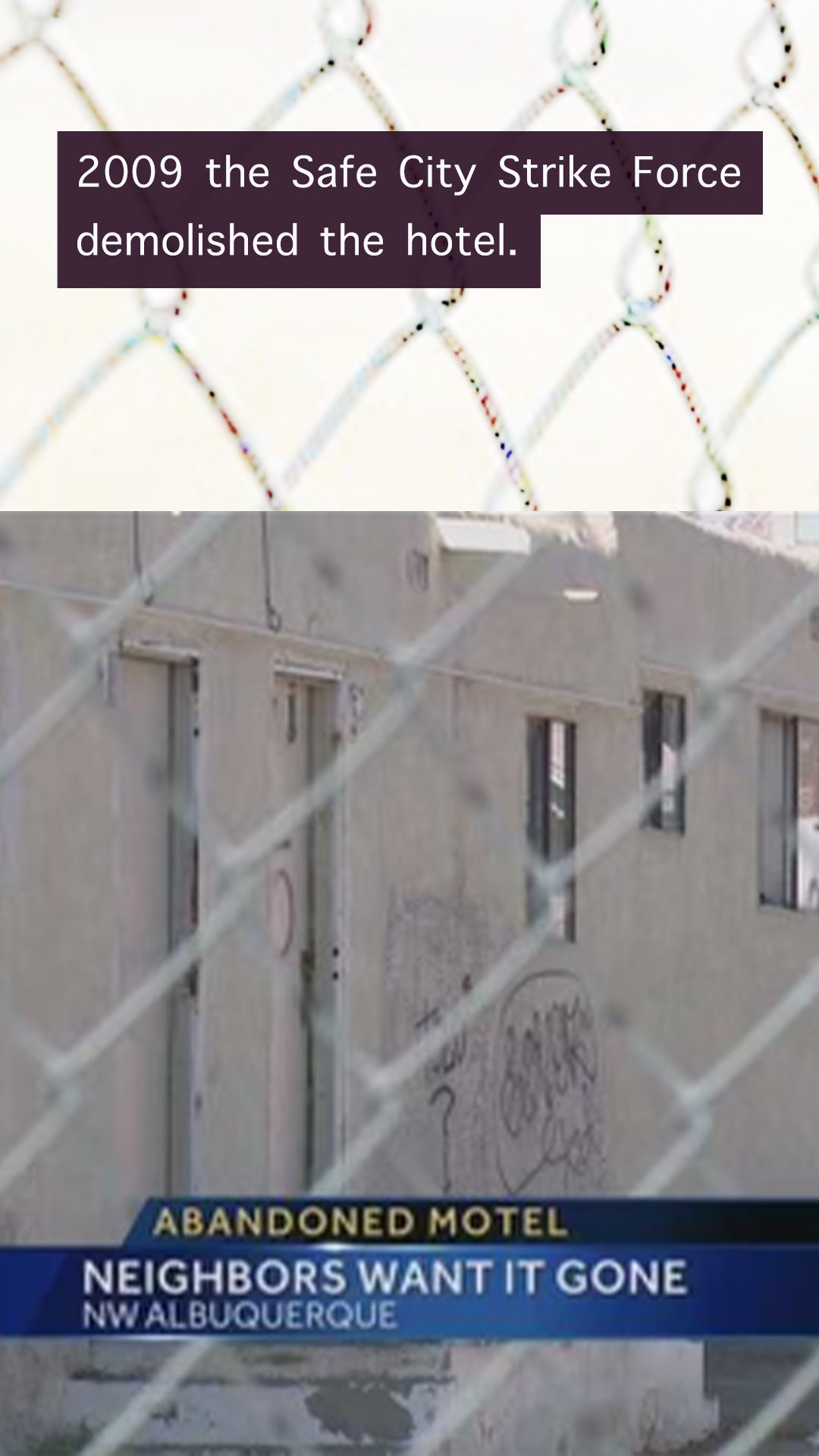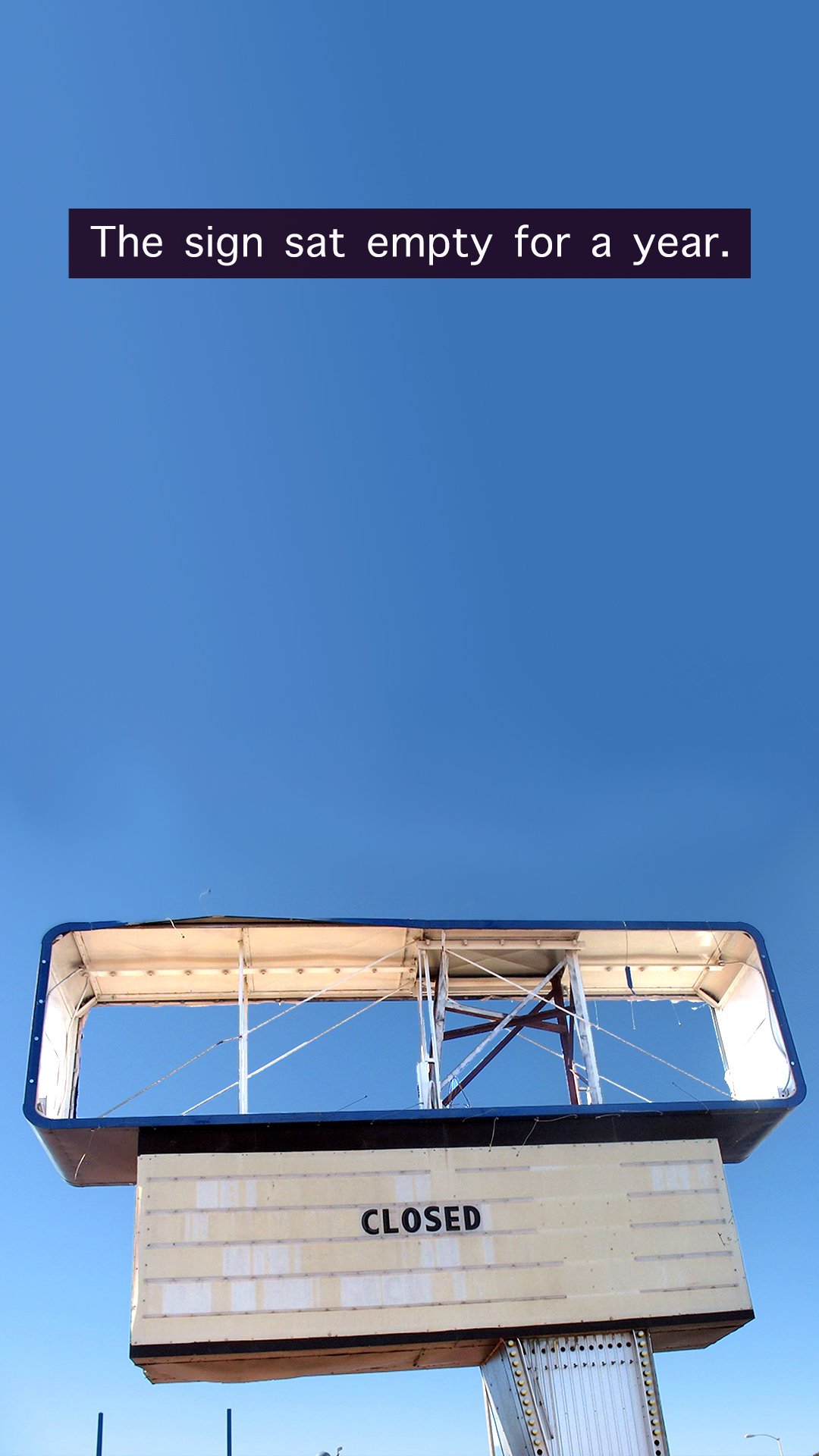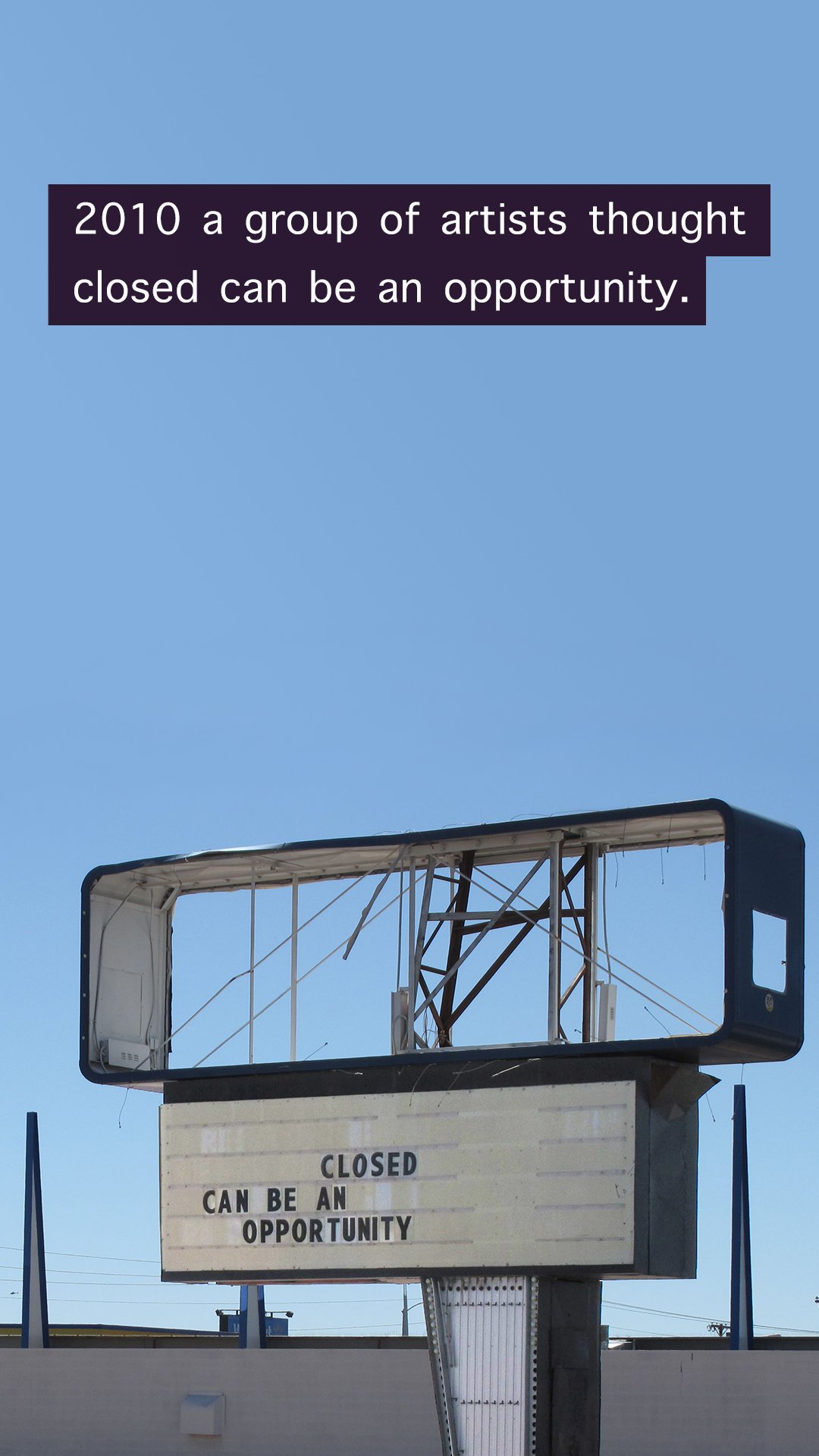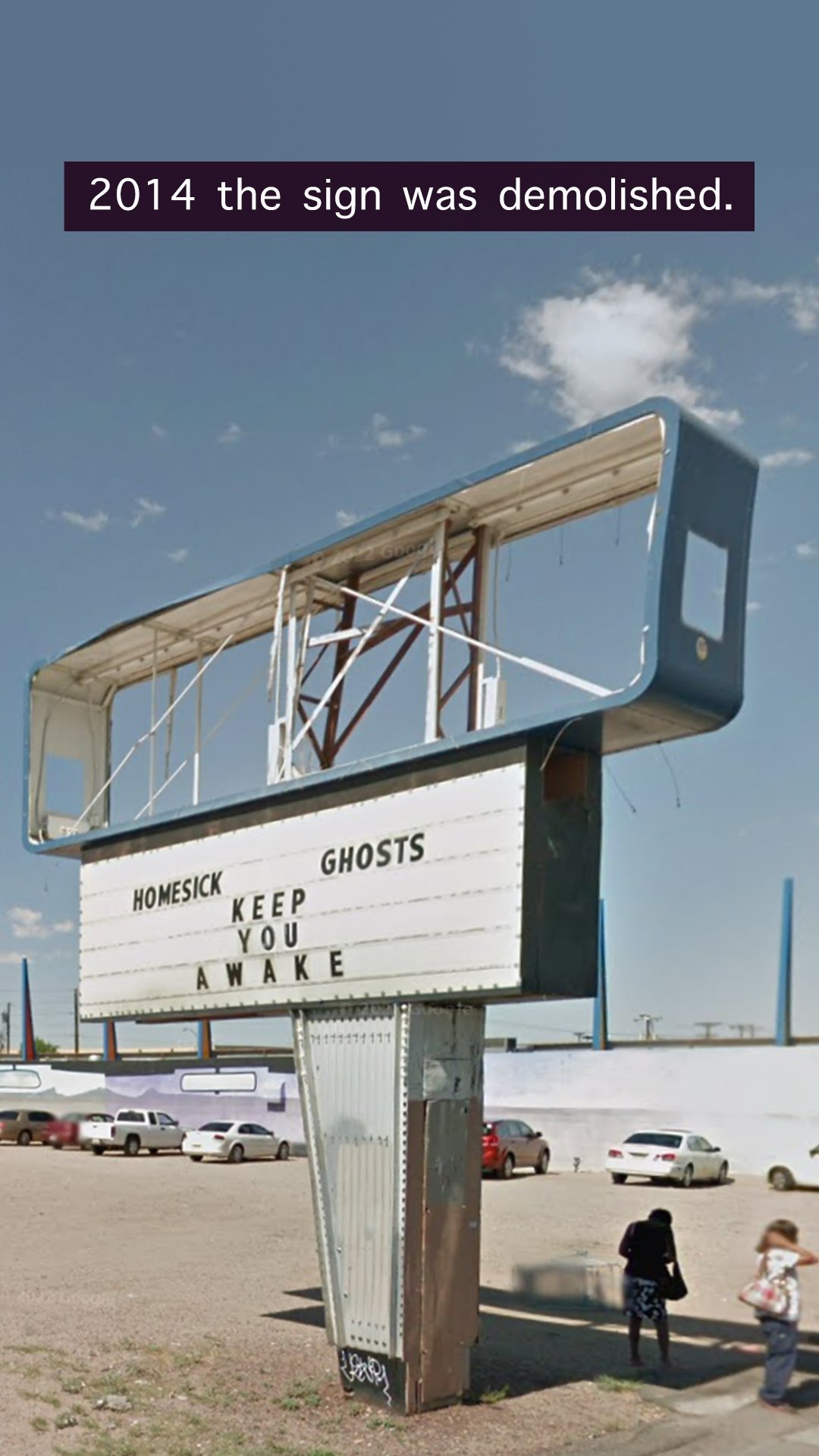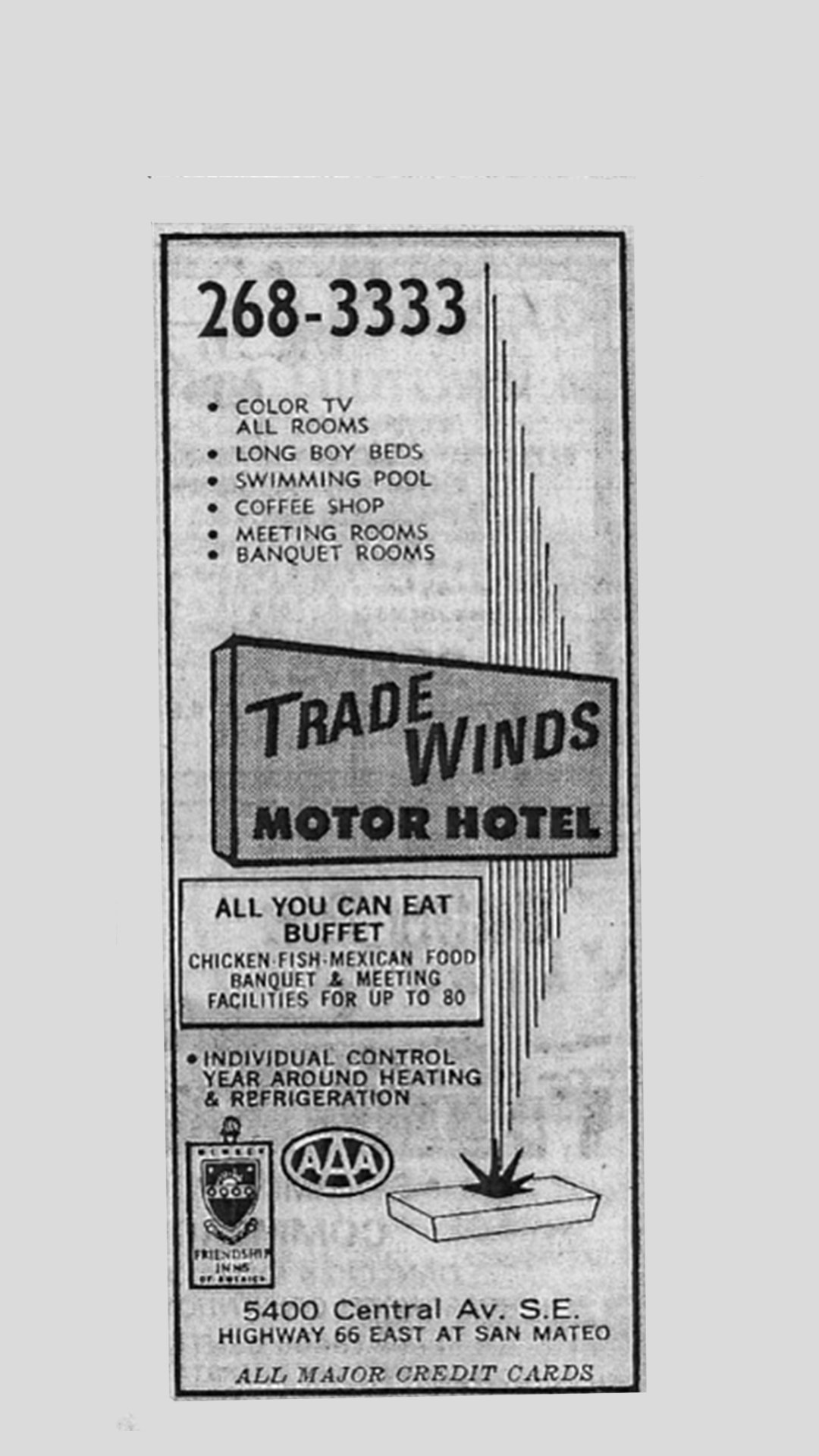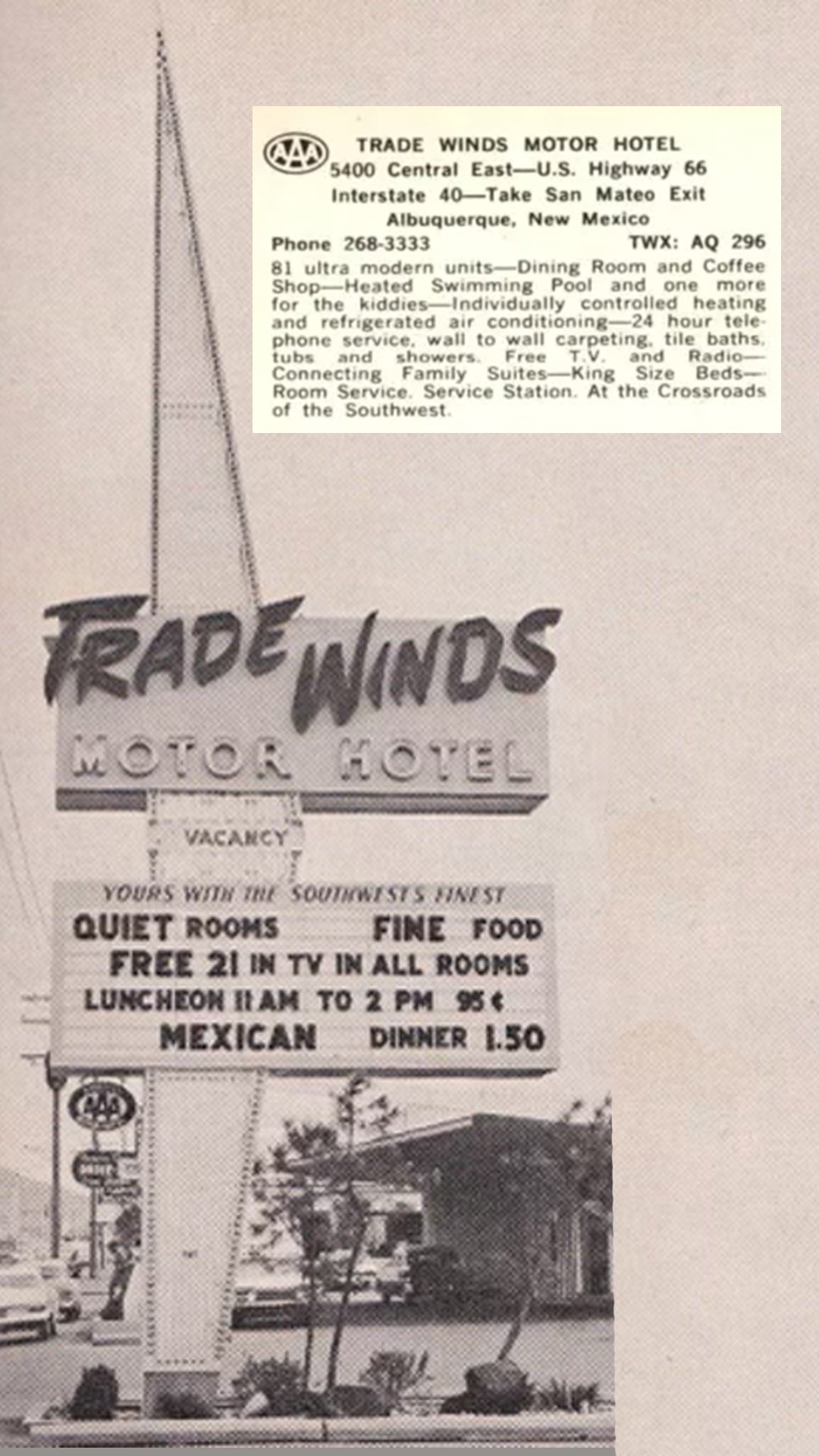What happened to the Trade Winds Sign?
In 1940, Calvin and H.B. Horn opened a truck stop at 5400 Central Ave SE in Albuquerque. They turned this location into the Trade Winds Motor Hotel in 1958, just in time for the 1958 New Mexico State Fair.
In 1956 the Federal Highway act of 1956 created the interstate system across the United States, increasing the level of automobile traffic and overnight stays in Albuquerque. Central Avenue was considered the “last stop for water and gas,” and to compete for tourists businesses constructed unique, flashy, and very bright neon signs on their properties.
Most of these neon signs were created by Electrical Products of New Mexico, known today as Zeon Signs. More on Zeon in another post (likely many more!).
The Trade Winds Motor Lodge was advertised on it’s postcards as having:
“81 ultra modern units—Dining Room and Coffee Shop—Heated Swimming Pool and one more for the kiddies—Individually controlled heating and refrigerated air conditioning—24 hour telephone service, wall to wall carpeting, tile baths, tubs and showers. Free T.V. and Radio—Connecting Family Suites—King Size Beds—Room Service. Service Station. At the Crossroads of the Southwest.”
The hotel architecture boasted a googie style front, a futurist style that defined car culture of the Atomic Modern era. In front of the lobby steel beam supports formed a modern porte-cochère, a drive-thru porch that visitors could park under during check-in.
The municipal sign ordinance in 1976 impacted the height, scale, brightness and motion of neon signs, resulting in a cut-back of unique and bright signs along Central. Many signs around this time were replaced with shorter rectangular signs, and new signs were built with simpler designs that could be easily adapted to new businesses moving into the location, rather than unique signs for individual businesses.
This stretch of Albuquerque was already beginning to experience decline as the finished construction of Interstate 40 drew business North away from Central.
The Trade Winds became a Travelodge chain sometime in the 90’s. by the 2000’s, the motel housed longer-term local residents struggling with permanent housing. It became the target of the Safe City Strike Force in 2009. Upon announcement of the motel’s imminent removal, Albuquerque Police Chief Ray Schultz said, ““In my 27 years of law enforcement, I’ve been on this property more times than I want to count—it goes back to when the old El Cid used to be next door—so this is a good thing for this area of the city.”
By 2009, the former Trade Winds was the 7th motel on Central Ave the city had torn down by the SCSF in recent years. It was reported that the city had an oversupply of motel, though that may be leaving out details about the active disinvestment occurring in this part of Albuquerque.
After it was razed, the former Trade Winds property sat empty, but the sign remained with “CLOSED” posted on the letter tracks of the readerboard. The dirt lot sat next to the old Octopus Car Wash, and was often crossed by pedestrians cutting through from San Mateo Blvd. The sign was overlooked, just another empty piece of this once vibrant boulevard.
Then, in 2010, a new Assistant Professor of Art at UNM, Ellen Babcock, saw the sign and thought, “closed can be an opportunity,” and bought some readerboard marquee letters to put up on the sign.
As she began changing the sign messages, the sign gained more attention. To generate the text for the sign, Ellen and her cohort gathered messages from riders waiting at the bus stop under the sign, used as phone number to collect text poetry from the public, and held poetry workshops with students at the nearby Highland High School.
“Forget closed dreams wanted”
“I clap for you in my head all the time”
“Wrap my eyes around my spine so I can look brave”
“You better practice your street talk”
“First of all you have to keep your boots clean”
“I say you are safe child you are safe”
“Homesick ghosts keep you awake.”
The sign poetry project led to Ellen’s creation of the public arts non-profit Friends of the Orphan Signs.
In 2015 the lot was purchased and developed by Santosh Mody into a commercial park, called the Trade Winds Shopping Center. The original sign was finally removed, and replaced with a smaller version that was reminiscent of the original classic Trade Winds sign.

